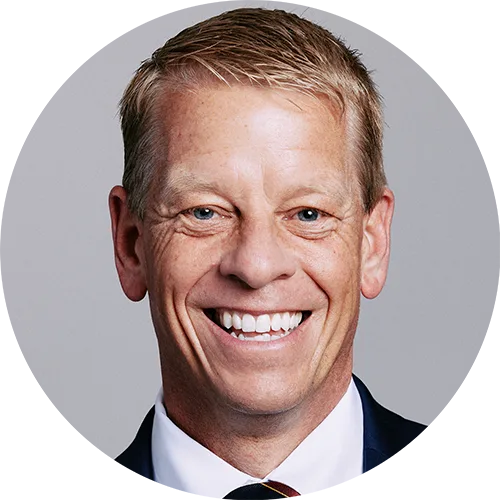Church History in 5 Minutes

5 Minutes in Church History has reached a milestone: this is the one-hundredth episode. To commemorate, we will provide a five-minute summary of church history.
John, the last of the Apostles, taught Polycarp, who went on to be the bishop of Smyrna. The early church, up through the 400s, is a story of martyrs and bishops and apologists. The Roman Empire was the challenger outside; heresy was the challenge within. To speak to the challenge outside, there were the apologists and the martyrs. Even in their death, the martyrs were providing a faithful witness to Christianity. Polycarp who was one of these early martyrs. To respond to the challenge from within, the early church engaged in the recognition of the New Testament canon. The church also formulated statements of belief, summaries of orthodox teaching—the Apostles' Creed, the Nicene Creed, and the Definition of Chalcedon. We also see the development of an episcopacy, or rule by bishops.
In the 400s, we have Augustine, who was a bridge between the early church and the medieval church. As he lay dying, the Vandals were laying siege to his city, Hippo Regius, in northern Africa. This was the end of the Roman world and the breaking in of the medieval era. The medieval world was a world of popes, theologians, emperors, councils, and Crusades. It was a world of monks and nuns, mystics and scholastics. And there was one figure who embodied many of these features, and that's Anselm of Canterbury. He was a monk; he later went on to be bishop at Canterbury; and he was involved in theological developments with his work on the argument for the existence of God and on the atonement. He wrote the wonderful book Cur Deus Homo (Why God Became Man). He was even involved in the First Crusade. Because of power plays between the king of England and the pope, he was exiled from his home in Canterbury.
Then we move on to the Reformation, which stretched from the 1500s through the 1600s. We can get at the theology of the Reformation through the five Solas: sola Scriptura, sola fide, sola gratia, solus Christus, and soli Deo gloria. There are also the various branches of the Reformation, beginning in Germany with Martin Luther and Lutheranism; in Zürich, we have Ulrich Zwingli; in Geneva, we have John Calvin and the Reformed church; in England, we have the Anglicans; and in Scotland, we have Presbyterianism and then Puritanism.
As we move into the 1700s, we see that it was the worst of times. This is the rise of modernism and the rise of deism. This would eventually give rise to the secularism of our age. But it was also the best of times. The 1700s saw the First Great Awakening and great revivals under men such as Jonathan Edwards and George Whitefield.
In the 1800s, we see the beginnings of higher criticism and the Second Great Awakening. This was a little different from the First Great Awakening. Charles Finney, the preeminent evangelist of the Second Great Awakening, was known for his innovative revival techniques (including "the anxious bench") and emotionalistic preaching; as a result, he looked and sounded a little different than Edwards and Whitefield.
As we move into the 1900s, we've got the controversy between theological liberals and so-called Fundamentalists, which involved figures such J. Gresham Machen, founder of Westminster Theological Seminary. The 1900s saw the rise of evangelicalism and the evangelistic crusades of Billy Graham. By the time we reach the twenty-first century, we have entered an age of missions as well as an age of ecumenism. It is also an age of theological confusion and an age of martyrdom. Thus, we have come full circle, back to the beginning and the martyrdom of Polycarp.
Recent Episodes
A Little Church History of a Middle Colony: The First Great Awakening
December 17, 2025|American Church History
A Little Church History of a Middle Colony: Early Influences
December 10, 2025|American Church History
Gunpowder and a Proclamation
December 3, 2025|Geographical Perspectives
Thanksgiving in Church History
November 26, 2025|American Church History
3 Sermons on the Hallelujah Chorus
November 19, 2025|General Church History
Charles Jennens’ Libretto
November 12, 2025|General Church History
